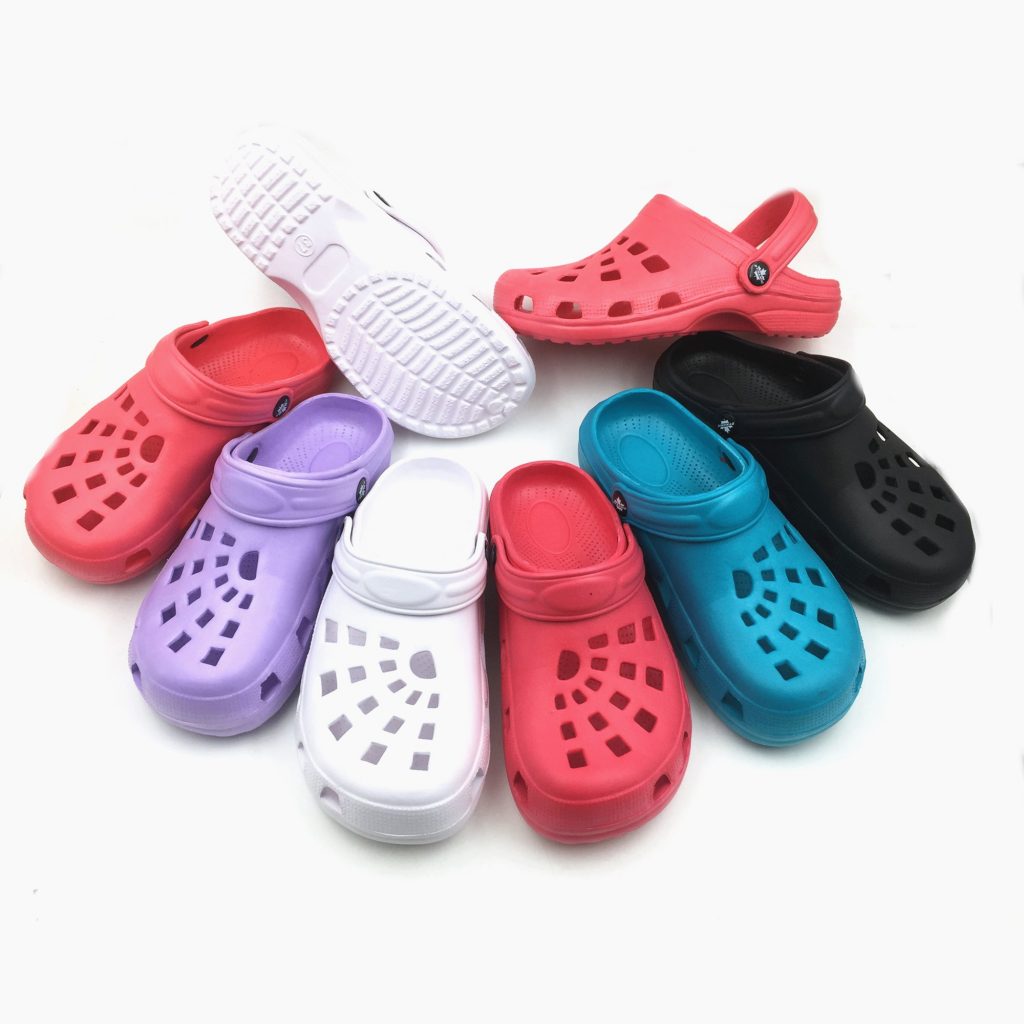Most people know there are many kinds of materials, such as EVA, PVC, PU and so on, but most people do not know their characteristics and differences, so today I will talk to you about their characteristics and differences:

(1) rubber: Used for various sports shoes outsole; advantages: good wear resistance, non-slip, elastic, not easy to break, good flexibility, good extensibility, good contraction stability, good hardness, good bending. Disadvantages: Heavy Weight, easy to spit cream (a quality issue), not easy to corrosion (environmental problems)
(2) PU: polymer polyurethane synthetic material, often long for basketball, tennis shoes midsole, also can be directly used for casual shoes’ outsole. Advantages: density, high hardness, wear resistance, good elasticity, good oxidation resistance, easy to corrosion and environmental protection, not easy to wrinkle. Disadvantages: absorbent, easy to turn yellow, easy to break, poor elongation, water-resistant, easy to rot at the bottom.
(3) EVA: ethylene acetate copolymer, polymer material. Commonly used for jogging, casual shoes, foot training shoes in the midsole. Advantages: lightweight, good elasticity, good flexibility, not easy to wrinkle, has excellent coloring, suitable for all kinds of climate. Disadvantages: easy to absorb water, not easy to corrosion adverse environmental protection, easy to dirty.
(4) Pylon (MD) : Eva Secondary High Pressure Molding products, the international running shoes, tennis shoes, basketball shoes in the main material, also can be used for casual shoe’s outsole. Advantages: light weight, elastic, fine appearance, good softness. Easy to clean, good hardness, density, tensile force, tear and elongation. Disadvantages: not easy to corrosion adverse environmental protection, high temperature wrinkle, easy to shrink.
(5) TPR: TPR granules hot melt after injection molding, commonly used for jogging, jogging, casual shoes’ midsole, outsole. Advantages: easy to mold, low price. Disadvantages: heavy material, poor wear (not wear-resistant), poor softness, poor bending (not folding), poor shock absorption
(6) performance comparison: TPR proportion, heavy, general flexibility, wear resistance in general. Rubber sole proportion is also larger, but softer, wear-resistant, strong grip, but poor elasticity, generally used in indoor football shoes and casual shoes. Eva Bottom is very light, have flexibility, wear long only flexibility decreases, become a bit more solid. Pu, Md Bottom is elastic and durable deformation, movement is more flexible and comfortable, small specific gravity, very light, so the use of more widely (PU than MD density larger shock absorption effect is better, but also relatively heavy), general large plates are rubber, wear resistance and skid resistance.

